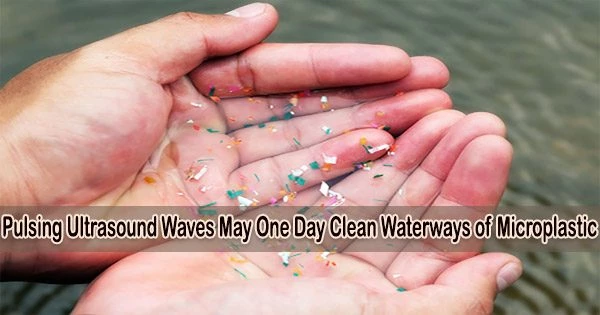Most waterways, from headwater streams to the Arctic Ocean, have colorful plastic debris floating along below the surface. These almost noticeable microplastics, which are smaller than 5 mm diameter, may be dangerous to aquatic life and plants as well as people.
Therefore, researchers are coming up with strategies to get rid of them and stop them at the source.
The majority of the plastic particles from actual water samples are now removed by a two-stage system created with steel tubes and pulsating sound waves, according to a team’s research.
The researchers will present their results at the spring meeting of the American Chemical Society (ACS).
“The idea came from a discussion with a colleague who said that we need new ways to collect microplastics from water,” says Menake Piyasena, Ph.D., the project’s principal investigator. “Because acoustic forces can push particles together, I wondered if we could use them to aggregate microplastics in water, making the plastic easier to remove.”
The most popular method for eliminating these components from water is filtration. For instance, washing machine outlet filters can prevent clothing fibers from washing into wastewater. The filters must be cleaned frequently since they might become clogged, making this process expensive on a wide scale.
Another alternative would be to use acoustic forces, or sound waves, to concentrate plastic particles in moving water. These forces transmit energy to surrounding particles, causing some of them to vibrate and move.
We have shown that acoustic forces can be used to concentrate a wide range of microplastic sizes. And from here, we want to prove that this can be done on a larger scale with real samples that already have microplastics in them.
Menake Piyasena
Imagine a loud speaker that shakes the ground and sends specks of dirt and dust flying in all directions. In order to separate biological particles from liquids, such as red blood cells from plasma, scientists have previously been employing this phenomena.
This method has recently been used by some teams to separate microplastics from samples they had generated in the lab using only pure water. But this work was done with tiny volumes of water.
Nelum Perera, a graduate student working in Piyasena’s lab at New Mexico Tech, notes that they also employed microplastics that were only a few tens of microns narrower than the breadth of human hair.
“I read that most of the microplastics in the environment are larger than that,” says Perera, who is presenting the work. “So, I wanted to develop a device that could be useful for most of the sizes and could be scaled up to meet real-world goals.”
Perera built a proof-of-concept system using 8-mm-wide steel tubes coupled to one inlet tube and numerous output tubes to handle increased water flow rates. Then she attached a transducer to the metal tube’s side.
When the transducer was turned on, it sent ultrasonic waves down the metal tube, creating acoustic pressures that made it simpler to trap microplastics as they moved through the system. The prototype device is relatively simple compared to traditional filtration methods, Piyasena explains, because it doesn’t clog as easily as a filter.
In initial experiments with polystyrene, polyethylene and polymethyl methacrylate microplastics, the researchers discovered that smaller (6- to 180-µm-wide) particles behaved differently than the larger (180- to 300-µm-wide) ones in the presence of acoustic forces.
Particles of both sizes were stacked down the center of the channel and exited through the central outlet as clean water gushed out of the outlets on either side. But if fabric softener or laundry detergent were added to the water, the larger particles concentrated toward the sides and left out the side outlets, while the centre outlet released clean water.
Based on these findings, the researchers began work on a system that would be able to benefit from these various movements. They connected two steel tubes in tandem: The first stage captured small microplastics less than 180 µm wide, and the water stream with the remaining larger microplastics went to the second stage to be cleaned.
“We removed more than 70% of the small plastics and more than 82% of the large ones this way,” says Perera.
To show that the two-stage system could work for real-world applications, Perera and Piyasena collected water from a pond on the New Mexico Tech campus and from the Rio Grande River. They used filters to eliminate big pollutants from all of the samples, leaving water that still included dissolved materials that might have impacted the separation. Next, they spiked the water with microplastics.
Plastic particles were eliminated from ambient water samples using the acoustics device just as they were from pure water. According to Perera, the prototype would take around an hour and a half to clean one liter of water and cost about 7 cents to run for an hour.
The next step for the researchers is to create a system with bigger tubes or bundles of numerous tubes and test it on unspiked real-world samples like ocean water and washing machine wastewater.
“We have shown that acoustic forces can be used to concentrate a wide range of microplastic sizes,” says Piyasena. “And from here, we want to prove that this can be done on a larger scale with real samples that already have microplastics in them.”
















